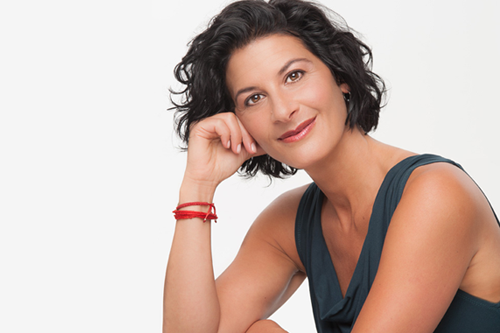
I first heard Nancy Levin speak last fall in Boulder, Colorado, at Emerging Women. She was so inspiring and real. I knew she was someone I wanted to keep my eye on, so I was thrilled to receive a copy of her new book, Jump…And Your Life Will Appear: An Inch-by-Inch Guide to Making a Major Change, from Balboa Press (A division of Hay House). It’s a combination memoir and how-to guide for transforming your life, something that’s at the heart of Rewire Me.
Nancy wrote Jump as “one massive attempt to help you disengage from your inner stalemate and make the best decision you can.” She helps you do this by breaking the process of change into ten steps:
- Admit to yourself what you already know.
- Tell the truth to someone safe.
- Imagine yourself free.
- Make one different choice.
- Set your new boundaries.
- Ask for help.
- Honor your resistance.
- Jump!
- The graceful exit.
- Say yes…and then say it again…and again.
My favorite is “Imagine yourself free,” an invitation to re-envision your life. This relates directly to my work with Dr. Joe Dispenza and the concept of neuroplasticity—how changing our thoughts can change our brains and consequently our lives because “neurons that fire together wire together.” I also found “Ask for help” to be important advice, especially the way Nancy puts it: “Receiving is also giving.” Sometimes we get so tangled up in our to-do lists that we forget we’re allowed to be vulnerable. The sky won’t fall if we can’t do everything by ourselves.
Nancy maps out the whole process of change, combining the practical with the personal, including stories from her own life and the messy divorce that forced her to jump into change. I connected to so many elements of her story, including the roots of the need to be Superwoman. Like Nancy’s brother, my sister was sickly and I think I innately knew that I needed to do everything right so I wouldn’t require much attention from my parents. Nancy also includes great quotes and insights from women about transformation, including lots of my favorite writers: Elizabeth Gilbert, Brené Brown, Louise Hay, and Mary Catherine Bateson.
In the following excerpt, Nancy writes about what prompted her to “jump”—to say yes to love and no to fear.


Within twenty-four hours of moving from New York City to Boulder, Colorado, I met the man who would become my husband. He was tall, gorgeous, charming, and sweet, and he swept me off my feet with a sense of adventure. Three days later, he spent the night…and he never left. (I was the one who finally left, more than eighteen years later.)
Before I knew it, I was doing things with this man that I had never done before—camping, skiing, rock climbing, mountain biking, and running marathons. I had thought I would return to New York after finishing my graduate program in poetry in Colorado, but it soon became clear that this city girl was not returning to the city.
My husband couldn’t have been more wrong for me “on paper.” Let’s just say he was far from the nice Jewish boy from a good East Coast family I was “supposed” to marry. My family and friends were confused. Why would Nancy choose love the hard way? But the pull was too great. My husband embodied most of the qualities that I had rejected in myself. He valued play, fun, leisure, rest, and adventure over work. For the most part, I classified fun and leisure as irresponsible and lazy. And the clincher was that underneath his masculine bravado, the unspoken whisper from his psyche was, “Hi, I’m broken.”
My unspoken whisper in response? “Great! I’m Superwoman. I will fix you.”
My Superwoman complex started when I was two years old. That year, my six-year-old brother died. Severely mentally disabled from birth, he had lived his life utterly incapacitated—broken—until he caught pneumonia, and his immune system could no longer fight. I’m told that even as a small child, I took great pride in my independence. I think I somehow sensed that my parents had their hands full. They were lost in grief, so I learned to take care of myself.
Several beliefs became imprinted within me during that time:
- My wants and needs are insignificant, and no one will be able to meet them anyway.
- I must be perfect in order to make up for my parents’ loss and grief.
- Since I’m the one who survived, I am undeserving of joy, yet at the same time, responsible for the happiness of my parents and other people.
- Maybe if I’m perfect and indispensable, then I can fix everything, all will be okay, and I will be loved.
- And the kicker: If I am imperfect—like my poor, sweet brother—I will be disposable and die.
Thus began the quest to become Superwoman from Perfectionville.
Those beliefs, of course, were not formed consciously. As a two-year-old, I was hardly aware that I felt the need to be perfect in order to feel safe. Attempting to be perfect was simply an unconscious survival strategy. Like all children, I was trying to figure out who I needed to be and what I needed to do to get the most love possible, while avoiding trouble and pain as much as I could.
Our childhood beliefs may be illogical, but they take hold and become the way we see the world. They are unconscious “shadow beliefs” that become part of our personal operating systems. They tell us what we can and cannot do. The people and situations we attract into our lives are consistent with those beliefs—for better or worse.
As adults, we continue this unconscious, habitual, compulsive way of being without any awareness as to why. It’s only when we bring our shadow beliefs into conscious awareness in adulthood that we can see the hold they’ve had over us as well as the gifts they offer. Then, we can shine a light on these unwanted parts of ourselves, stop pushing them away, and integrate them in order to reclaim wholeness. Author and teacher Iyanla Vanzant says, “A belief is a thought—fueled by a feeling—that you think over and over again until it becomes habitual. Once it becomes habitual, you no longer even recognize that you are thinking it. For this reason, it is absolutely essential to identify and release the long-held, worn-out beliefs that often hold toxic thoughts in place.”
Unfortunately, when I married my husband, I had not reached that level of awareness.
Excerpted from Jump…and Your Life Will Appear: An Inch-by-Inch Guide to Making a Major Change (Balboa Press, 2014), by Nancy Levin. Reprinted with permission of the author.

Rose Caiola
Inspired. Rewired.



5 Comments
Sam Turner
“Superwoman Complex!”….I’m starting to believe this is a disease. I feel this way on so many different levels, as a working woman, mom and wife. Definitely something I need to work on.
Interesting article…